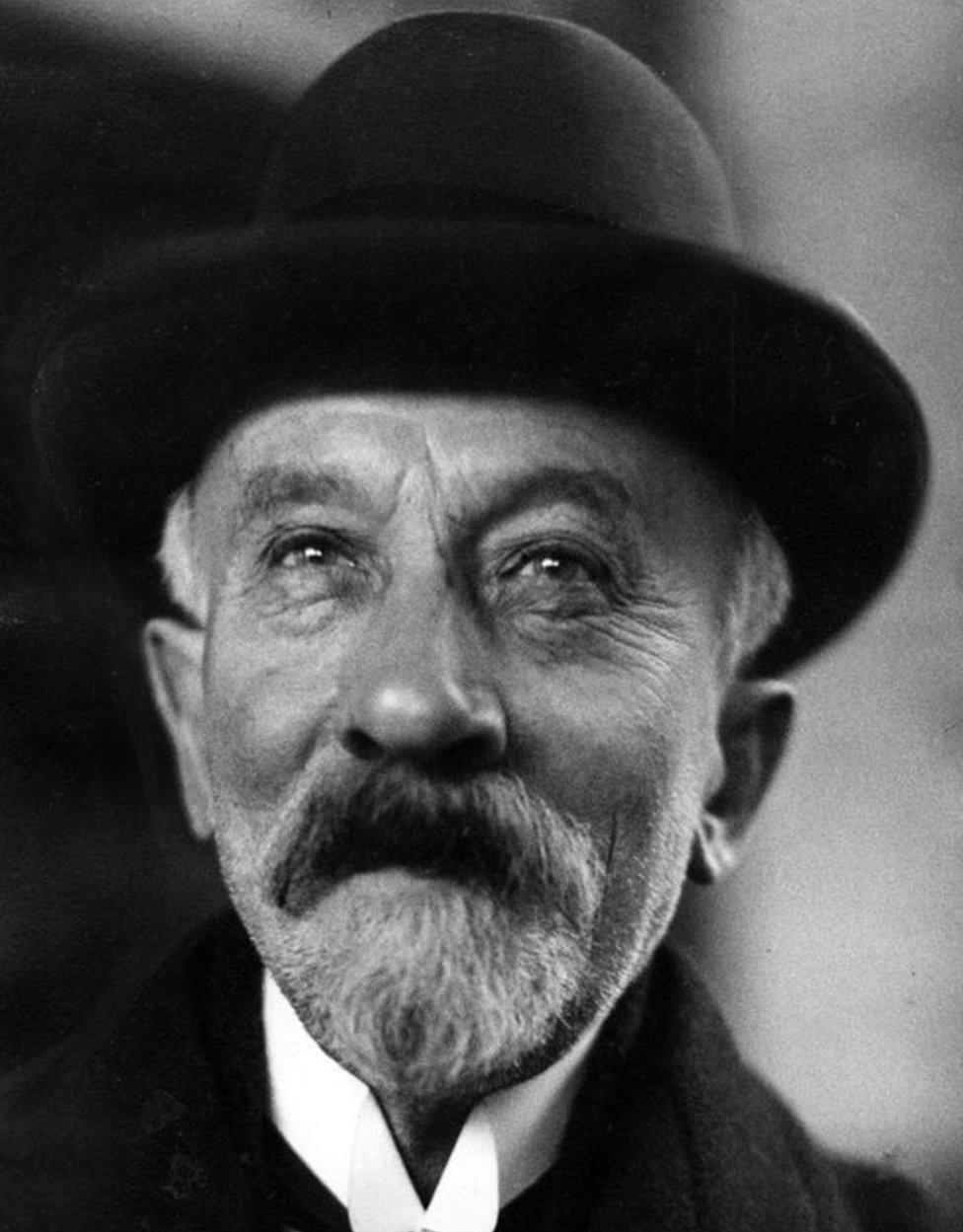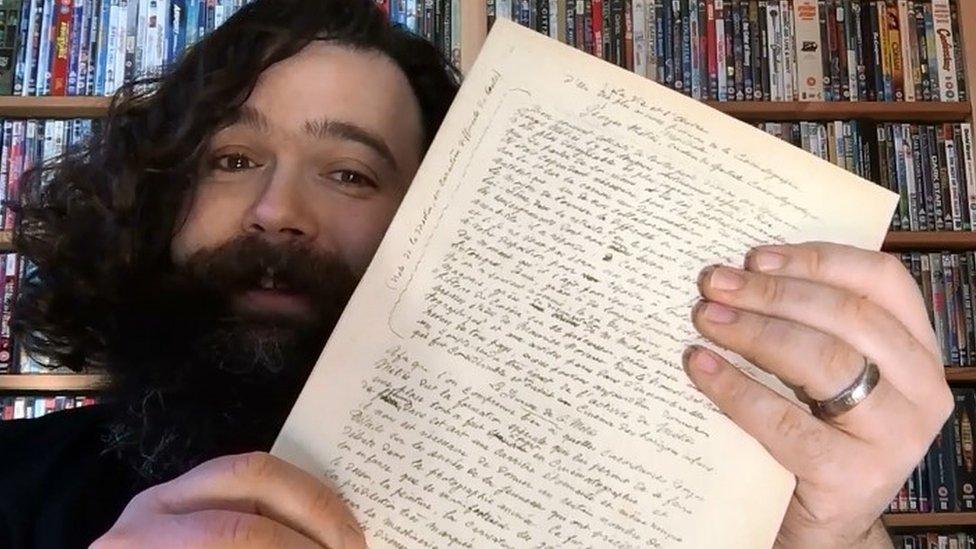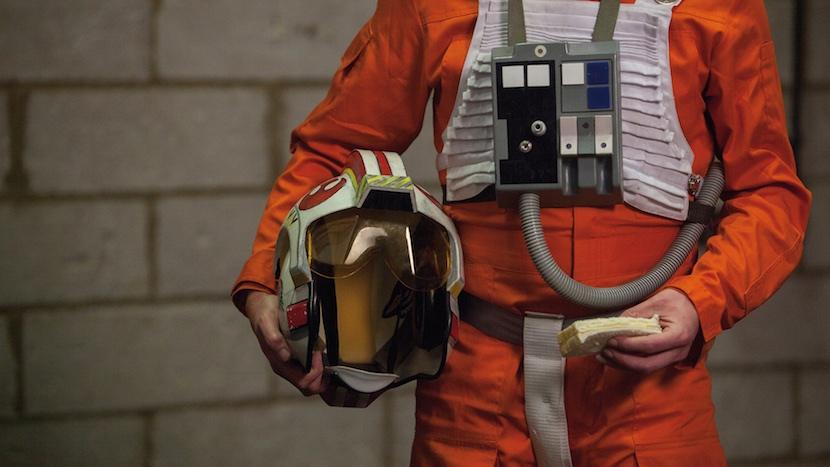Georges Méliès' rare autobiography to be reprinted
- Published

Méliès was 77 when he wrote his memoirs, which are long out of print
A rare autobiography of cinema pioneer Georges Méliès is to be republished after it was tracked down by a filmmaker.
Jon Spira located the memoir from a bookseller in France. It has been out of print since 1945 and was never translated into English.
Mr Spira, from Oxford, describes it as "firsthand testimony of the man who essentially invented narrative cinema".
Méliès' achievements include the 1902 movie blockbuster A Trip to the Moon.
With its ground-breaking special effects, it is remembered for its iconic image of a space capsule crashing into the face of the moon, external.
Mr Spira's Kickstarter campaign to republish the manuscripts - written by Méliès when he was 77, a year before his death - raised £11,000 in its first 24 hours.

Jon Spira tracked down the rare manuscript from a French bookseller
The director behind the Star Wars-inspired documentary Elstree 1976 was initially looking for a biography about his filmmaking hero.
"I found out about this super-rare book and I made it my mission to find a copy," he explained.
"When I finally did, it had a note on the first page saying that along with that version, there was an even rarer version which came with a facsimile of Méliès's handwritten manuscript."
Five hundred copies of the book in question were packaged with the facsimile, but most surviving copies are in the hands of film enthusiasts.
Mr Spira, who has made documentaries for the British Film Institute, tracked one down to a bookseller in France and haggled with him for the prized essays.
"I just got married and my incredible wife let me take a chunk out of our wedding account," he said.
"A couple of weeks later, a package arrives and there it is - 32 pages in Méliès's own tiny handwriting telling his own story beginning to end."

The repackaged and republished autobiography will be released in November
The autobiography has now been legally cleared by a lawyer to be republished.
It will be released to crowdfunders in November, unabridged in English and French.

Georges Méliès
He was born in Paris in 1861
A professional magician in his own right, he helped pioneer camera tricks like stop motion, slow motion, dissolves, fade-outs, superimposition, and double exposure
He made more than 400 films between 1899 and 1912
They include Cleopatra's Tomb, Christ Walking on Water, The Voyage Across the Impossible, and Hamlet
He died in poverty in Paris in 1938
- Published19 October 2017

- Published22 May 2017
